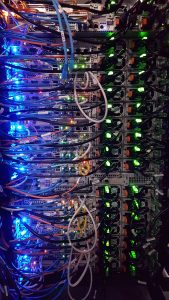Teaching foundational quantum computing skills
The National Convergence Technology Center’s (CTC) recently hosted another “Brown Bag” webinar, this one focusing on quantum computing concepts and skills. First launched in 2020, this series offers special topic presentations via bite-sized, 30-minute segments on both technical and employability topics. To date, these nine webinars have been attended “live” by over 400 people with another 970 views of the recordings on YouTube.

Last month, 32 faculty members from across the country attended “Quantum 101.” The presenter was JB Groves III, a full-time instructor for Wharton County Junior College with over 20 certifications in areas that include fiber optics, PC hardware, networking, and cybersecurity. JB is a published author in the fields of fiber optics, smart home technologies, and STEM education and serves the Electronics Technicians Association in several advisory capacities. JB discussed WCJC’s new “special topics” class on quantum computing that’s teaching essential quantum computing knowledge and skills IT students. He also discussed emerging workforce opportunities in quantum computing.
To watch a recording of this webinar, click here.
The design of this new class was informed by a recent “QIST National Workforce Plan” that was published by the White House earlier this year. Inside that report was a list of the nine quantum computing “key concepts” that students should be learning:
1. Mathematics of probability, vectors, algebra, trigonometry, complex numbers, and linear
transformations to describe the physical world via quantum mechanics
2. The description of a quantum state
3. Quantum measurement outcomes and applications
4. The quantum bit, or qubit
5. Entanglement and superposition
6. Coherence and decoherence
7. Quantum computers that solve certain complex computational problems more
efficiently than classical computers
8. Quantum communication using entanglement or a transmission channel, such as optical
fiber, to transfer quantum information between different locations
9. Quantum sensing using quantum states to detect and measure physical properties with the
highest precision allowed by quantum mechanics
More overview information can be found in this 2019 article from Cosmos Magazine online.
More information on the qubit can be found in this University of Waterloo paper.
To see past Brown Bag videos, visit this YouTube playlist.
